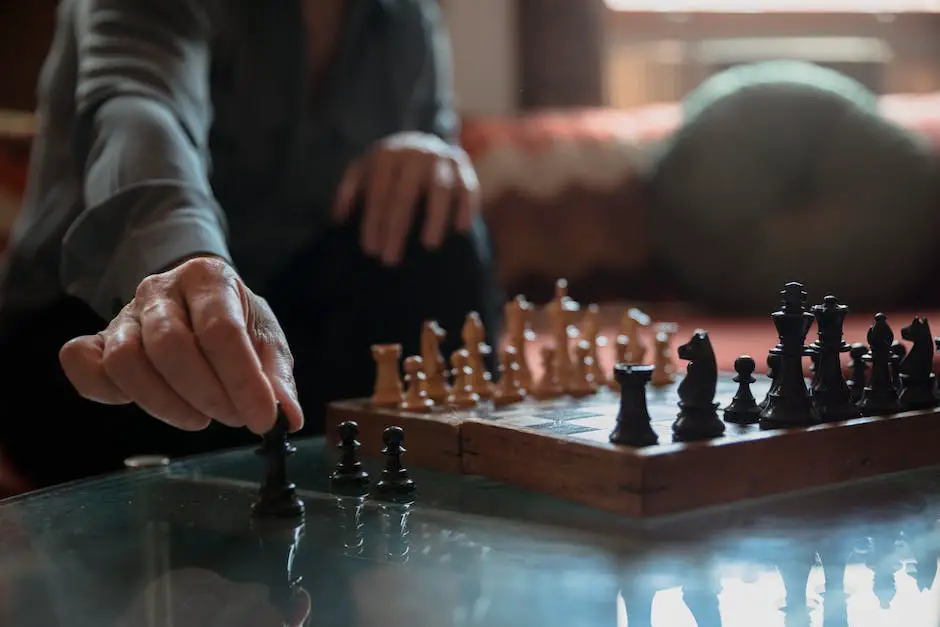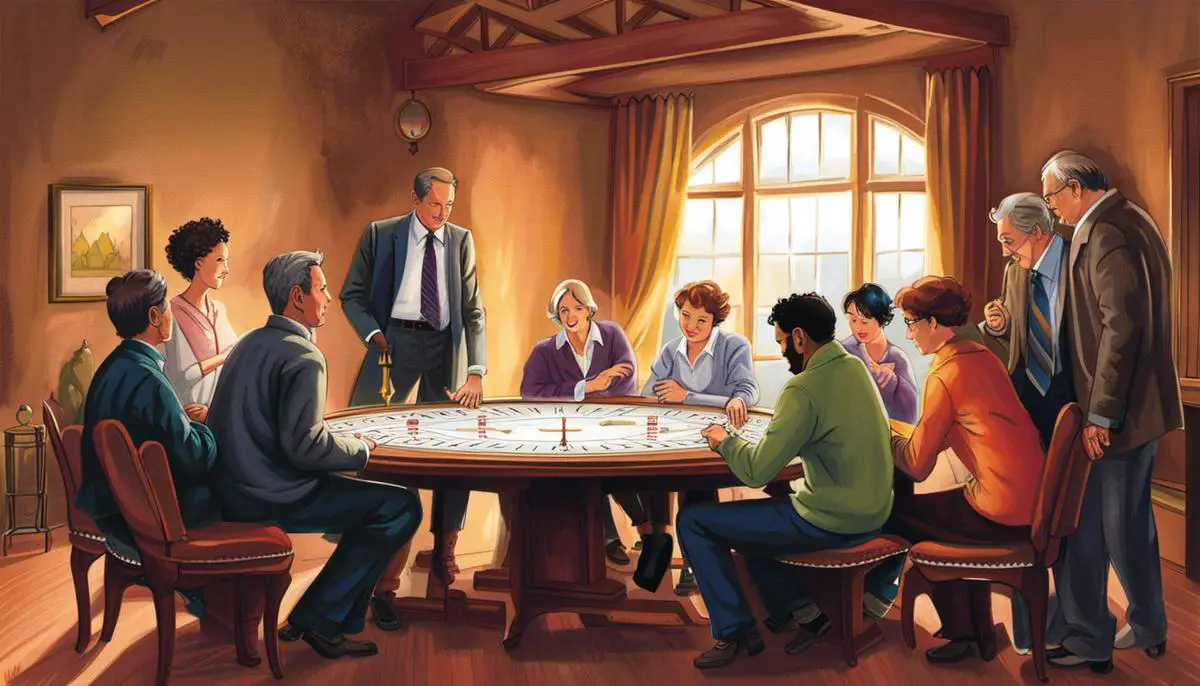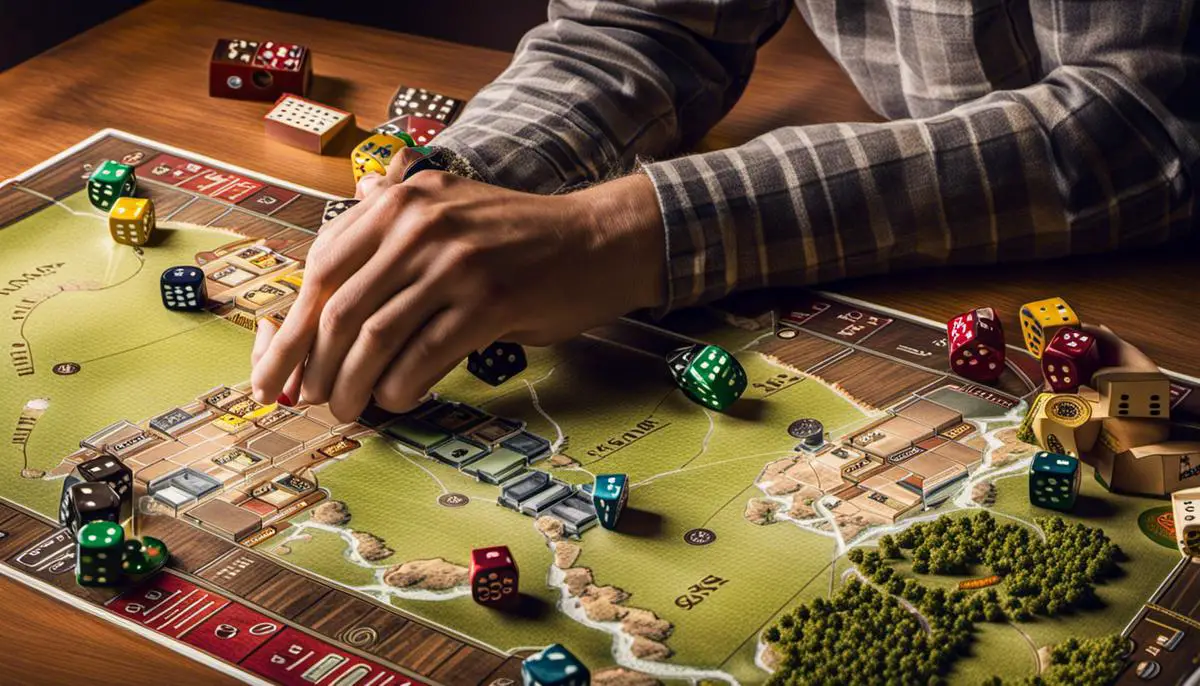Whether you’re a seasoned player aiming to refine your strategy, or a beginner looking to step up your game, the essence of mastering Time’s Up board game lies in grasping the rules and tactics fully, followed by frequent practice. Undeniably, each game becomes an adrenaline-charged thrill ride as you dive into handling the objectives, knowing the role of each player and the ways to accumulate points. This journey takes you through an in-depth study of the game’s rules, exploring strategies, and the essentiality of quick wits and effective communication. Moreover, it emphasizes the importance of constant practice which helps you apply, reassess, and fine-tune your strategies effectively.
Understanding the Game Rules
Understanding Rules of Time’s Up Game
The fundamental rules of the Time’s Up board game rotate around two teams guessing as many names of persons, places, or things correctly within an established time frame. Each game consists of three separate rounds, each having unique rules but all following the same basic principle – guess the name on the drawn card correctly to earn points for your team.
Objective and Winning Requisites
The objective of Time’s Up board game is to accrue the most points over the three rounds of game play. To win, a team must skillfully guess and communicate under progressively challenging rules and constraints each round. Points are awarded for each correct guess, and the team with the highest cumulative score after the final round is declared the winner.
Roles and Tasks in Each Round
Each player in Time’s Up takes their turn as a clue-giver for their team. The clue-giver draws a card and attempts to get their teammates to guess the name written on the card, within the allotted time.
In the first round, the clue-giver can use any words, sounds, or gestures aside from the name itself to describe what’s written on the card. In the second round, the clue-giver can only use one word for the description, which can be repeated as many times as needed. Also, any non-verbal clues like sounds or gestures are permitted.
In the third and final round, no words are allowed at all. The clue-giver can only use pantomime or charades to describe the name on the card. Rounds continue until all the cards have been successfully guessed or the time expires.
Calculating Points
Points in Time’s Up are simple to calculate – generally, one point is awarded for every card correctly guessed. However, in rounds two and three, extra points are awarded for successfully guessing names from cards that stumped your team in earlier rounds. If a team manages to guess all names correctly before the time expires, they are rewarded with a bonus point. The team with the highest total of points at the end of the three rounds is declared the winner. If the teams are tied, they play a deciding round under similar conditions to round three.

Strategizing and Game Play Techniques
Understanding Time’s Up Game Strategy
The first step in improving your game in Time’s Up is developing a deeper understanding of the strategies involved. This board game relies heavily on your communication skills and quick thinking. In three rounds, you will need to describe, hint, or act out a celebrity name or well-known figure using creative storytelling, gesturing and expressive facial movements. Each round time decreases, creating a level of pressure where quick thinking skills come into play.
Round One: Thorough Description
In the first round, you’re allowed to use comprehensive descriptions. A good strategy is to provide abundant information about the figure without revealing the name, which can help your team mate remember the figure in the following rounds. The more vivid and diverse your description, the more chances you have to successfully guide your team mate to the right answer.
Round Two: Efficient Hints
Unlike round one, the second round only allows you to use one word as a hint. The hint needs to be extremely effective; thinking back to what your teammates said in the first round could be very beneficial. It’s advantageous to use a unique or distinctive word from the information provided in the previous round, as this strategy can trigger your team member’s memory and save precious seconds.
Round Three: Be Expressive
In the third and final round, no words are allowed at all – only gestures. Effective non-verbal communication is crucial here. Remember to make the most out of the cues you hinted in the previous rounds but translate them into expressive actions this time. Your theatrics, eye movements, body language, and even your miming skills can play a key role in helping your teammates guess the figure correctly.
Importance of Quick Thinking and Communication Skills
Effective communication is your backbone throughout the game. Being able to quickly interpret your partner’s actions or hints comes through clear and precise communication. Meanwhile, quick thinking can effectively save your team valuable time. Practicing associative thinking, where one trigger word instantly reminds you of something else, can help you speed up your responses.
Effective Time Management in Time’s Up
In Time’s Up, every second matters. Over-elaborating or spending too much time on a single card might leave you with less time for the remaining ones. It’s crucial to gauge when to pass on a particular name if it’s consuming too much time. Remember, the goal is to get as many names right as possible within the time limit. Thus, effective time management can often lead to winning the game.
Following these strategies and techniques
Following these strategies and techniques can significantly improve your Time’s Up game play, making the game not only fun but also a chance to enhance your quick thinking and effective communication skills.

Playing Practice Games
Getting Started With ‘Time’s Up’
Time’s Up is a board game that requires teams to guess names of various figures, such as characters, celebrities, and historical figures. The game is divided into three rounds, with each round becoming progressively more difficult. Before you start playing, divide yourself into teams of two or more, and shuffle the deck and draw 40 cards to lay face-down in the centre of the play area.
Round One: Game Play Basics
The first round is the simplest. A person from a team takes a card from the deck, reads the name on it, and then tries to describe that person to their teammates without saying the name out loud. The team gets to guess as much as they want until they can get the name right. Remember, there’s no limit to the number of guesses that a team can make in this round. However, be quick because each team only gets 30 seconds per turn.
Round Two: Polish Your Game Skills
In the second round, the aim is similar, but the rules are slightly different. The person who’s turn it is can only use one word to describe the character or person on the card. Additionally, they can use gestures and non-word vocalizations. This round challenges your creativity and ability to communicate information succinctly—the key is to think back to round one and remember the clues that were given then.
Round Three: Put Your Mimicry Skills to a Test
The third and final round becomes even more challenging, with the player only able to mime the person on the card. No words can be used at all. This round requires focus and observation skills. You need to consider how you can physically portray key characteristics or actions associated with the figure on the card.
Feedback and Improvement Strategies in Time’s Up
To hone your skills at Time’s Up, pay attention to the strategies that worked in the previous rounds. Reflect on the clues that helped your team to guess correctly. Similarly, if some of your clues weren’t effective, think about why they didn’t work and how you can improve them next time. Be creative with your descriptions and mimes—sometimes, out-of-the-box thinking can lead to the most memorable and successful clues. Lastly, remember that effective communication and teamwork are key to success in Time’s Up. As the game progresses, be sure to adopt creative and effective ways to communicate with your team, enhancing your overall game experience.
Takeaway
Time’s Up is a fun, engaging game that tests your quick thinking, knowledge, and creative skills. It’s a great way to spend an evening with friends or family, while also constantly learning and developing your lateral thinking and team building skills. Whether you’re a newbie or seasoned player, remember to enjoy the game and make the most of these rounds. After all, it’s all about having fun!

As your understanding deepens and your strategies become more nuanced, the thrill of the Time’s Up board game enhances exponentially. Essentially, mastering the game is not just about winning, but about the voyage you undertake to get there – the application of various techniques, effective adjustments to unforeseen challenges, and the constant back-and-forth interactions with fellow players. The proficiency you gain transcends beyond the scope of the game board, seeping into your overall critical thinking and decision-making abilities. So, keep playing, keep practicing and race against the clock, for in Time’s Up, every second counts!
Frequently Asked Questions: Time’s Up! Board Game
A: Time’s Up! is a lively and entertaining party game where players take turns guessing words, acting, and miming to help their team guess as many words as possible within a time limit.
A: In Time’s Up!, players divide into two teams and draw cards with words or phrases to describe. In the first round, players can say anything to help their team guess. In the second round, they can only use one word, and in the third round, they must act or mime.
A: The goal of Time’s Up! is to guess as many words or phrases as possible within the time limit. The team that correctly guesses the most cards wins the game.
A: Yes, the time limit in Time’s Up! is customizable based on the preferences of the players. Teams can decide on the duration of each round to suit their playstyle.
A: Yes, Time’s Up! is ideal for large groups, making it a perfect choice for parties, gatherings, or game nights with multiple participants.
A: Time’s Up! can be adapted for players of all ages. Parents can modify the content or use kid-friendly words for a family-friendly version.
A: Time’s Up! stands out for its three-round structure, which requires players to employ different communication techniques (words, one-word hints, and actions) to guess the cards.
A: Time’s Up! heavily relies on language-based clues, so players should have a good command of the language used for gameplay.
A: Yes, Time’s Up! has expansion sets with additional words, phrases, and challenges, providing new content and excitement for repeat play.
A: Yes, there are digital versions and online platforms where you can play Time’s Up! with friends or other players from around the world
